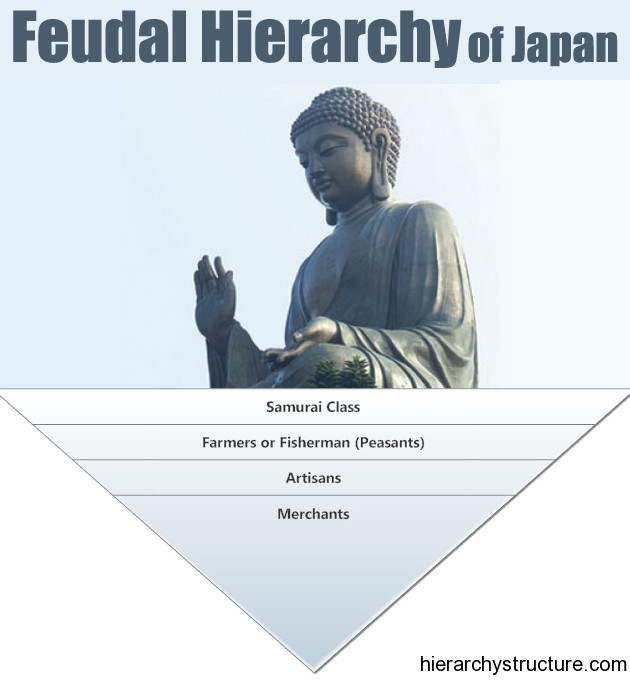Like many countries witnessing feudal system, Japan also become a part of this medieval feudal institution and people in Japan got structured their society in four tier class system. Although feudal system in European countries was completely based on land distribution and peasants were the people among the lowest class in the feudal system. The Japanese feudal system that existed between 9th century and 12th century saw little variation from the traditional European feudal system.
In the feudal hierarchy of Japan the whole society was divided into various classes and the merchants were among the lowest rung. According to the Confucian ideals, the farmers and fishermen were emphasized as one of the productive members in the society. As their job was to provide food to all the people, hence fishermen and farmers enjoyed higher status in Japan as compared to merchants or shopkeepers. Following are the various classes that existed in Japanese feudal system apart from king and noblemen.
Samurai Class
This was the topmost class of the feudal Japan which constituted of samurai warriors. If we look at the population of Japan, the samurai warriors constituted only 10% of the total population, but since they showcased enormous power along with their daimyos lords, they were placed on top.
The Japanese feudal system also forced lower class people to bow down in order to show respect while surpassing any samurai. There were people above samurais also for whom samurai worked, and Shoguns were the masters of Daimyos. But these classes were among the emperors and were the highest ranked people. Daimyos were the powerful warriors, also known as warlords, hence they were not made a part of this class system.
Farmers or Fisherman (Peasants)
On the japan social hierarchy ladder, after the samurais the next position was acquired by farmers. Since they were the producers of the food on which the whole population and all the classes depended, they were considered as an honorable class. They were placed higher in the hierarchy and enjoyed more privileges than the merchants or the artisans.
Artisans
These were the people who produced the goods of daily requirements like utensils, clothes etc. Some of the artisans were also involved in making swords and Boatwright for samurais.
Merchants
The traveling traders and the shopkeepers constituted the lowest class in the Japanese feudal hierarchy. The Japanese theories even referred merchants as parasites as they were considered to be making profits from the labor & work done by the more productive class of peasants. But as the time passed the merchants managed to grow their economic power and it resulted in weakening of the restrictions against them.
This was a close description of feudal hierarchy of Japan which seized its existence in the 19th century as the floating world came to an end. In the Japanese feudal system also, the distribution of people in various classes resulted in the diversification of people in the country. Some aspects of feudalism can be witnessed even today in this country.

